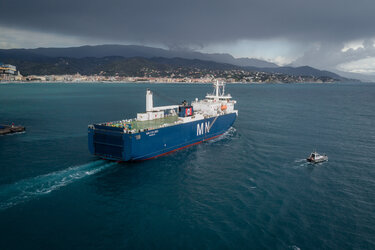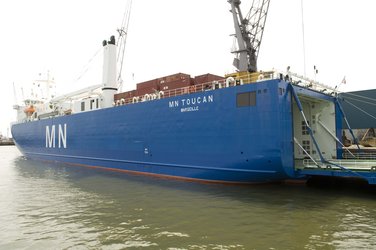Accept all cookies Accept only essential cookies See our Cookie Notice

About ESA
The European Space Agency (ESA) is Europe’s gateway to space. Its mission is to shape the development of Europe’s space capability and ensure that investment in space continues to deliver benefits to the citizens of Europe and the world.
Highlights
ESA - United space in Europe
This is ESA ESA facts Member States & Cooperating States Funding Director General Top management For Member State Delegations European vision European Space Policy ESA & EU Space Councils Responsibility & Sustainability Annual Report Calendar of meetings Corporate newsEstablishments & sites
ESA Headquarters ESA ESTEC ESA ESOC ESA ESRIN ESA EAC ESA ESAC Europe's Spaceport ESA ESEC ESA ECSAT Brussels Office Washington OfficeWorking with ESA
Business with ESA ESA Commercialisation Gateway Law at ESA Careers Cyber resilience at ESA IT at ESA Newsroom Partnerships Merchandising Licence Education Open Space Innovation Platform Integrity and Reporting Administrative Tribunal Health and SafetyMore about ESA
History ESA Historical Archives Exhibitions Publications Art & Culture ESA Merchandise Kids Diversity ESA Brand Centre ESA ChampionsLatest
Space in Member States
Find out more about space activities in our 23 Member States, and understand how ESA works together with their national agencies, institutions and organisations.
Science & Exploration
Exploring our Solar System and unlocking the secrets of the Universe
Go to topicAstronauts
Missions
Juice Euclid Webb Solar Orbiter BepiColombo Gaia ExoMars Cheops Exoplanet missions More missionsActivities
International Space Station Orion service module Gateway Concordia Caves & Pangaea BenefitsLatest
Space Safety
Protecting life and infrastructure on Earth and in orbit
Go to topicAsteroids
Asteroids and Planetary Defence Asteroid danger explained Flyeye telescope: asteroid detection Hera mission: asteroid deflection Near-Earth Object Coordination CentreSpace junk
About space debris Space debris by the numbers Space Environment Report In space refuelling, refurbishing and removingSafety from space
Clean Space ecodesign Zero Debris Technologies Space for Earth Supporting Sustainable DevelopmentLatest
Applications
Using space to benefit citizens and meet future challenges on Earth
Go to topicObserving the Earth
Observing the Earth Future EO Copernicus Meteorology Space for our climate Satellite missionsCommercialisation
ESA Commercialisation Gateway Open Space Innovation Platform Business Incubation ESA Space SolutionsLatest
Enabling & Support
Making space accessible and developing the technologies for the future
Go to topicBuilding missions
Space Engineering and Technology Test centre Laboratories Concurrent Design Facility Preparing for the future Shaping the Future Discovery and Preparation Advanced Concepts TeamSpace transportation
Space Transportation Ariane Vega Space Rider Future space transportation Boost! Europe's Spaceport Launches from Europe's Spaceport from 2012Latest

Graphene light sail
Thank you for liking
You have already liked this page, you can only like it once!
Video of drop tower research into graphene light sails.
A tiny sail made of the thinnest material known – one carbon-atom-thick graphene – has passed initial tests designed to show that it could be a viable material to make solar sails for spacecraft.
Light sails are one of the most promising existing space propulsion technologies that could enable us to reach other star systems within many decades.
Traditional spacecraft carry fuel to power their journeys and use complex orbital manoeuvres around other planets. But the weight of the fuel makes them difficult to launch and intricate flyby manoeuvres considerably lengthen the journey.
Solar sails need no fuel. Spacecraft equipped with them are thus much lighter and easier to launch.
Two spacecraft flown over the past decade have already demonstrated the technology, but they used sails made of polyimide and of mylar, a polyester film.
Graphene is much lighter. To test whether it could be used as a sail, researchers used a scrap just 3 millimetres across.
They dropped it from a 100-m tall tower in Bremen, Germany, to test whether it worked under vacuum and in microgravity.
Once the sail was in free-fall – effectively eliminating the effects of gravity – they shone a series of laser lights onto it, to see whether it would act as a solar sail.
Shining a 1 watt laser made the sail accelerate by up to 1 m/s2, similar to the acceleration of an office lift, but for solar sails the acceleration continues as long as sunlight keeps hitting the sails, taking spacecraft to higher and higher speeds.
-
CREDIT
GrapheneSail team -
LICENCE
ESA Standard Licence

Graphene sail in microgravity

Euclid sets sail from the port of Savona, Italy

French cargo ship MN Toucan set sail for Kourou at a…

Gossamer deorbit sail















 Germany
Germany
 Austria
Austria
 Belgium
Belgium
 Denmark
Denmark
 Spain
Spain
 Estonia
Estonia
 Finland
Finland
 France
France
 Greece
Greece
 Hungary
Hungary
 Ireland
Ireland
 Italy
Italy
 Luxembourg
Luxembourg
 Norway
Norway
 The Netherlands
The Netherlands
 Poland
Poland
 Portugal
Portugal
 Czechia
Czechia
 Romania
Romania
 United Kingdom
United Kingdom
 Slovenia
Slovenia
 Sweden
Sweden
 Switzerland
Switzerland

























